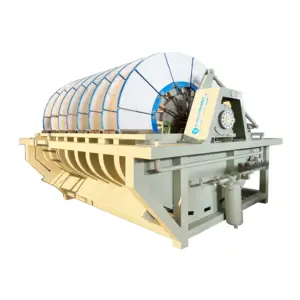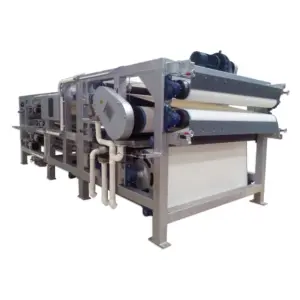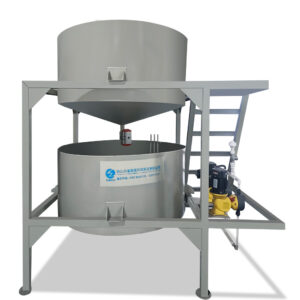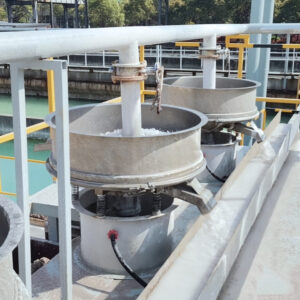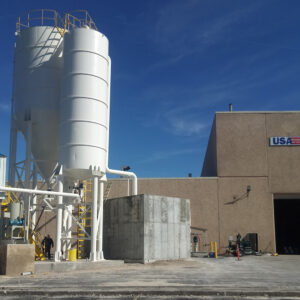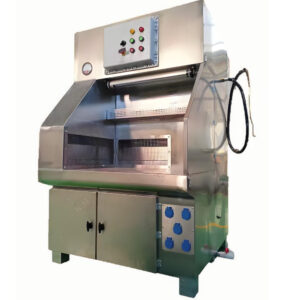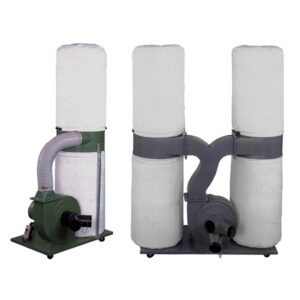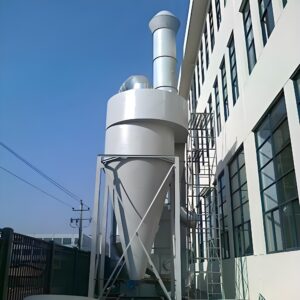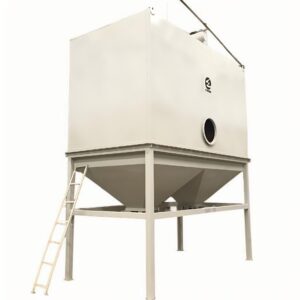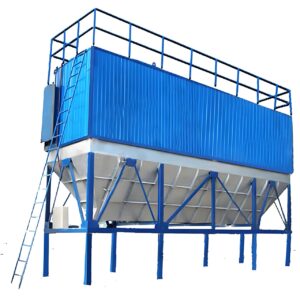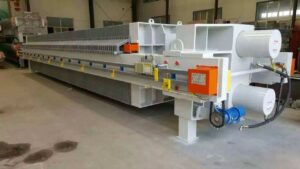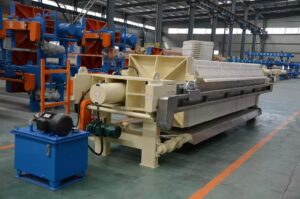The global water treatment industry faces unprecedented regulatory scrutiny as environmental standards tighten and public health concerns intensify. Certified water treatment systems have become not just a regulatory requirement but a competitive necessity for facilities across industries. From pharmaceutical manufacturing to municipal utilities, organizations are discovering that non-compliance can result in operational shutdowns, hefty fines exceeding $100,000 daily, and irreparable damage to their reputation.
Without proper certification, your facility operates under constant threat of regulatory action. The Environmental Protection Agency reports that water quality violations have increased 23% over the past five years, with non-certified systems accounting for 78% of enforcement actions. The consequences extend beyond immediate penalties – facilities face operational disruptions, mandatory retrofitting costs, and potential civil litigation from affected communities.
This comprehensive guide examines the complex landscape of water treatment certification, providing technical insights, regulatory requirements, and practical solutions to help you navigate compliance successfully. We’ll explore certification standards, equipment selection criteria, and emerging regulatory trends that will shape the industry’s future, ensuring your facility stays ahead of evolving requirements.
What is Certified Water Treatment and Why Does It Matter?
Certified water treatment encompasses systems that meet specific regulatory standards for water purification, wastewater processing, and effluent discharge. These systems undergo rigorous testing and verification processes to ensure they consistently meet or exceed environmental and safety requirements established by regulatory bodies like the EPA, FDA, and state environmental agencies.
The certification process involves multiple layers of verification, starting with component-level testing and extending through complete system validation. PORVOO Clean Tech has observed that facilities often underestimate the complexity of this process, leading to costly delays and compliance gaps.
Technical Standards and Performance Metrics
Modern certification standards require systems to demonstrate consistent performance across multiple parameters. Primary treatment systems must achieve 85-95% removal efficiency for suspended solids, while secondary biological treatment systems must maintain 90-98% BOD removal rates. Advanced tertiary systems face even stricter requirements, with some applications demanding 99.9% pathogen removal efficiency.
| Treatment Level | Removal Efficiency | Key Parameters | Compliance Testing |
|---|---|---|---|
| Primary | 85-95% | Suspended solids, pH | Monthly sampling |
| Secondary | 90-98% | BOD, COD, nitrogen | Bi-weekly monitoring |
| Tertiary | 99%+ | Pathogens, trace contaminants | Continuous monitoring |
Regulatory Framework Evolution
The regulatory landscape has evolved significantly since the Clean Water Act’s inception. Current standards incorporate emerging contaminants, energy efficiency requirements, and climate resilience factors. Dr. Sarah Chen, a water treatment specialist at the Water Research Foundation, notes that “modern certification frameworks now consider lifecycle environmental impact, not just end-of-pipe performance.”
How Do Water Treatment Certification Standards Work?
Water treatment certification operates through a multi-tiered system involving federal, state, and local authorities. The process begins with design approval, where engineering specifications undergo regulatory review to ensure compliance with applicable standards. This phase typically requires 60-90 days and involves detailed documentation of treatment processes, equipment specifications, and expected performance outcomes.
Federal Certification Requirements
Federal standards establish baseline requirements for all certified wastewater treatment systems. The EPA’s National Pollutant Discharge Elimination System (NPDES) program sets discharge limits based on receiving water quality and designated uses. These permits specify exact concentration limits for pollutants, monitoring requirements, and reporting obligations that certified systems must meet.
Industrial facilities face additional requirements under sector-specific regulations. Pharmaceutical manufacturers must comply with EPA’s Pharmaceutical Manufacturing Guidelines, which set discharge limits 40% stricter than general manufacturing standards. Food processing facilities operate under different parameters, with organic loading requirements that can vary seasonally based on production cycles.
State and Local Certification Layers
State environmental agencies often impose requirements that exceed federal minimums. California’s Title 22 regulations, for example, mandate additional treatment steps for water reuse applications, requiring certified systems to achieve log 6 pathogen reduction – significantly higher than federal standards. In our experience, facilities operating across multiple states must navigate a complex web of varying requirements that can substantially impact system design and operation costs.
Local authorities add another compliance layer through connection permits and discharge agreements. Municipal systems increasingly require industrial pretreatment that goes beyond federal standards, particularly in water-stressed regions where reuse is prioritized.
What Are the Key Regulatory Requirements for Wastewater Systems?
Understanding regulatory requirements requires examining both performance standards and operational obligations. Performance standards define what your system must achieve, while operational requirements specify how you demonstrate and maintain compliance.
Performance Standards and Discharge Limits
Current discharge limits vary significantly by industry and location. Municipal treatment plants typically operate under limits of 30 mg/L for BOD and suspended solids, with 85% removal efficiency requirements. Industrial facilities face more stringent limits, particularly for toxic pollutants where detection limits can be as low as 0.1 mg/L for certain heavy metals.
The challenge intensifies with emerging contaminants. PFAS compounds, pharmaceuticals, and microplastics increasingly appear in discharge permits, despite limited treatment technologies. According to the Water Environment Federation, 34% of facilities report struggling with emerging contaminant compliance due to technology limitations and unclear regulatory guidance.
Monitoring and Reporting Obligations
Certified systems must maintain continuous compliance documentation. This includes daily operational logs, weekly performance monitoring, and monthly compliance reports. The data requirements are extensive – a typical medium-sized facility generates over 50,000 data points annually for regulatory reporting.
| Parameter | Monitoring Frequency | Reporting Requirement | Compliance Threshold |
|---|---|---|---|
| Flow rate | Continuous | Monthly average | ±10% of design |
| pH | Continuous | Daily maximum/minimum | 6.0-9.0 |
| BOD | 3x weekly | Monthly average | 30 mg/L |
| Suspended solids | 3x weekly | Monthly average | 30 mg/L |
Operational Certification Requirements
Beyond performance standards, operators must maintain specific certifications. Most states require Class II or higher operator certification for systems serving populations over 2,500. The certification process involves 200+ hours of training, documented experience, and passing comprehensive examinations covering chemistry, biology, and mechanical systems.
How to Choose Compliant Wastewater Equipment?
Selecting certified wastewater treatment systems requires balancing performance requirements, operational costs, and regulatory compliance. The decision process should begin with a comprehensive regulatory analysis identifying all applicable standards and future requirements that may affect system longevity.
Equipment Certification and Validation
Certified equipment must undergo third-party testing and validation. The National Sanitation Foundation (NSF) International provides widely recognized certification for water treatment components. NSF-certified equipment has undergone rigorous testing protocols that verify performance claims under various operating conditions.
However, equipment certification alone doesn’t guarantee system compliance. Integration challenges can compromise performance even with certified components. In our experience, facilities achieve better outcomes when they work with experienced system integrators who understand the complexities of combining certified components into compliant systems.
Technology Selection Criteria
Modern facilities increasingly choose modular treatment systems that provide flexibility for future regulatory changes. Membrane bioreactors (MBRs) offer excellent performance consistency, achieving 99%+ removal efficiency for most parameters. While initial costs run 30-40% higher than conventional systems, the operational reliability and compact footprint often justify the investment.
Advanced oxidation processes (AOPs) are becoming essential for facilities dealing with emerging contaminants. These systems can achieve log 4+ reduction for pharmaceutical compounds and PFAS, though operating costs remain substantial at $0.15-0.25 per gallon treated.
Cost-Benefit Analysis Framework
Compliance costs extend beyond equipment purchase prices. A comprehensive analysis should include:
- Initial capital costs for certified equipment
- Installation and commissioning expenses
- Ongoing operational costs including energy, chemicals, and labor
- Regulatory compliance costs including monitoring, reporting, and operator certification
- Risk mitigation costs considering potential violations and business disruption
What Challenges Do Facilities Face with Certification Compliance?
Maintaining certification compliance presents ongoing challenges that extend far beyond initial system installation. The most significant challenge involves keeping pace with evolving regulations while maintaining operational efficiency and cost control.
Regulatory Uncertainty and Adaptation
Regulatory requirements continue evolving, creating uncertainty for long-term planning. The EPA’s recent PFAS regulations exemplify this challenge – facilities must now address contaminants that weren’t regulated when their systems were designed. Retrofitting existing systems for PFAS removal can cost $500,000-$2 million depending on system size and complexity.
Climate change adds another layer of complexity. Extreme weather events can compromise system performance, while changing precipitation patterns affect influent characteristics. Facilities in flood-prone areas now face additional requirements for resilient design that can maintain compliance during extreme events.
Resource and Expertise Limitations
Smaller facilities often struggle with the technical expertise required for compliance management. The shortage of certified operators has intensified, with the Water Environment Federation reporting a 15% gap between available positions and qualified candidates. This shortage drives up operational costs and can compromise compliance when facilities cannot maintain adequate staffing levels.
While compliant wastewater equipment provides the foundation for regulatory compliance, successful implementation requires ongoing technical support and expertise that many facilities find challenging to maintain internally.
How Are Emerging Technologies Reshaping Water Treatment Regulations?
The intersection of advancing technology and evolving regulations creates both opportunities and challenges for water treatment facilities. Digital monitoring systems, artificial intelligence, and advanced treatment processes are transforming how facilities achieve and maintain compliance.
Digital Transformation and Smart Monitoring
Connected sensors and IoT devices enable continuous monitoring that exceeds traditional compliance requirements. Smart systems can detect compliance deviations in real-time, enabling corrective action before violations occur. These systems generate vast amounts of data that regulatory agencies increasingly expect facilities to leverage for predictive compliance management.
Machine learning algorithms can identify patterns in treatment performance that human operators might miss. One municipal facility reported reducing compliance violations by 67% after implementing AI-driven process optimization, though the technology requires significant investment in infrastructure and training.
Advanced Treatment Integration
Regulatory agencies are recognizing advanced treatment technologies that weren’t available when current standards were developed. Electrochemical treatment processes, for example, can achieve removal efficiencies that exceed traditional biological treatment by 30-40% for certain compounds. However, these technologies often lack established certification pathways, creating regulatory uncertainty.
The integration of renewable energy with treatment systems also presents regulatory opportunities. Solar-powered treatment systems can reduce operational costs while meeting sustainability mandates, though grid-tie requirements and backup power provisions add complexity to certification processes.
Certified water treatment systems represent more than regulatory compliance – they’re strategic investments in operational sustainability and risk management. The regulatory landscape will continue evolving, with emerging contaminants, climate resilience, and sustainability requirements shaping future standards. Facilities that proactively invest in robust, flexible treatment systems position themselves for long-term success.
Success requires understanding that certification is an ongoing process, not a one-time achievement. The most successful facilities develop comprehensive compliance management programs that integrate technical excellence, operational discipline, and strategic planning. They invest in certified equipment, qualified personnel, and robust monitoring systems that provide confidence in their compliance status.
Looking forward, the industry will likely see increased standardization of emerging contaminant regulations, greater emphasis on energy efficiency, and expanded requirements for climate resilience. Facilities that begin planning for these changes now will find themselves better positioned to adapt when new requirements become mandatory.
For facilities evaluating their water treatment needs, partnering with experienced providers who understand the regulatory landscape becomes essential. The complexity of modern compliance requirements makes it crucial to work with teams that can navigate both technical and regulatory challenges effectively.
Frequently Asked Questions
Q: What are Certified Water Treatment Systems?
A: Certified water treatment systems are designed and tested to meet specific standards and regulations that ensure they effectively remove contaminants from water. These systems are certified by reputable organizations to guarantee their safety and performance, making them reliable options for improving water quality.
Q: How are Water Treatment Systems Certified?
A: Water treatment systems are certified through rigorous testing and evaluation processes. Certification involves assessing material safety, ensuring that materials do not leach harmful substances into the water, and verifying performance by testing contaminant reduction capabilities. Organizations like NSF and WQA set standards for these certifications.
Q: What Key Regulations Apply to Certified Water Treatment Systems?
A: The primary regulations for certified water treatment systems focus on ensuring they meet safety and performance standards. In the U.S., the EPA oversees national primary drinking water regulations, while organizations like NSF provide standards for materials and performance. These regulations cover aspects such as material toxicity, chemical leaching, and contaminant reduction.
Q: Why is Certification Important for Water Treatment Systems?
A: Certification is crucial for water treatment systems as it ensures they are safe and effective. It provides consumers with confidence that the systems can remove harmful contaminants and are made from materials that do not leach toxins into the water. Certification also helps regulatory compliance, ensuring that systems meet or exceed legal standards for water quality.
Q: What Do Certified Water Treatment Systems Protect Against?
A: Certified water treatment systems protect against a wide range of contaminants, including:
- Pathogens: Such as bacteria and viruses that can cause illness.
- Heavy Metals: Like lead and arsenic, which can be harmful to health.
- Chemicals: Including VOCs and endocrine-disrupting compounds.
- Disinfection Byproducts: Formed during water treatment processes.
Q: How Do Certified Water Treatment Systems Benefit Consumers?
A: Certified water treatment systems benefit consumers by providing safe and clean drinking water. They ensure that systems are effective at removing contaminants, offer peace of mind regarding water quality, and help protect health by reducing exposure to harmful substances. Additionally, certification often requires systems to maintain performance over their lifespan, ensuring consistent water quality.
External Resources
Drinking Water Chemical Testing and Certification to NSF/ANSI/CAN 60 | UL Solutions – An in-depth overview of the certification process for water treatment chemicals, detailing regulatory requirements and the role of third-party certification in ensuring chemical safety for public drinking water.
National Primary Drinking Water Regulations | US EPA – A comprehensive resource outlining federal regulations, standards, and treatment techniques for public water systems in the United States, including regulatory frameworks for certified water treatment.
Drinking Water Treatment and Distribution System Operators | California State Water Resources Control Board – Provides details on operator certification processes, regulatory requirements, and guidelines for operating certified water treatment systems in California.
How are Water Treatment Systems Certified? | US Water Systems Blog – Explains the main organizations and standards involved in certifying water treatment products, such as NSF International, and covers the significance of various certifications for consumers and industry professionals.
Certification for Drinking Water Treatment Units | NSF International – Describes NSF’s role in testing and certifying point-of-use and point-of-entry water treatment units, outlining regulatory compliance and safety standards for public health protection.
Water Treatment Standards and Certification | Water Quality Association – Offers an overview of certification programs and standards for water treatment products, including guidelines for compliance with regulatory requirements and quality assurance in the industry.
